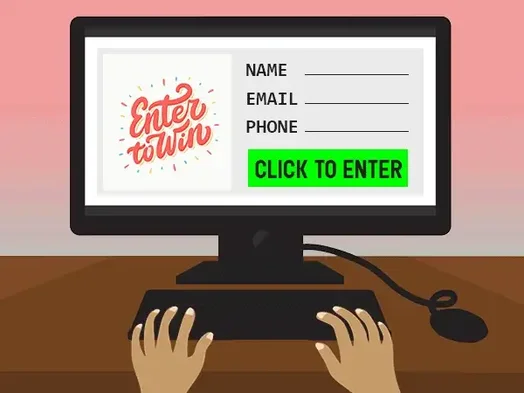From niche side-projects to mainstream platforms, sweepstakes models reshaped player options across the United States. With just seven states enacting online gaming laws and $8.4 billion reported in GGR last year, promotional-style contests found room to scale where regulated igaming remained limited.
Players flocked to freemium sites for simple mechanics, low cost, and redeemable rewards. Operators leaned on dual balances, turnkey tech, and strict KYC/AML to build trust and compliance-first offerings.
In this report we map market growth—from an 89% CAGR that pushed the sector to $3.1 billion in 2022 and toward a projected $11 billion—and trace rule shifts, new brands, and rising state scrutiny. You’ll see how contests differ from real-money gambling, why social features now drive engagement, and where clear documentation and responsible play tools created measurable value for users and businesses.
From Niche Contests to a Mainstream Space: The Past Decade at a Glance
What began as pilot promotions now supports a broad, resilient online market. Early token demos and mall-style promotions matured into full platforms that offered low-cost entry and clear prize paths. That shift made room for rapid adoption across most U.S. markets where regulated igaming remained limited.
Key milestones and market inflection points since 2015
2015–2018: Small pilots proved dual-balance models and free-entry mechanics could work at scale.
2019–2022: An 89% CAGR propelled the sector to $3.1 billion, validating the model during an uncertain economic period.
2025: Over 25 new launches pushed total platforms past 140, and standardized features like daily rewards and leaderboards became common.
How social and promotional contest rules enabled growth
Promotional rules that separate payment from gameplay let operators reach users in 44 largely unregulated states. Platforms leaned on transparent redemption, optional purchases, and freemium onboarding to stay compliant while offering familiar gaming features.
"Early adopters proved this was not a stopgap, but a durable category of online entertainment."
How Sweepstakes Have Changed in the Last 10 Years
A rapid revenue climb and shifting user habits turned niche promotions into mainstream online entertainment. From strong CAGR to new entrants, this period marked a clear turning point for product design and user trust.
Market growth and the road to multibillion dollars
Eilers & Krejcik reported an 89% CAGR from 2019–2022, taking the market to $3.1 billion and toward an $11 billion projection for 2025. The U.S. acted as a demand engine, where sweepstakes casinos offered freemium access while regulated igaming stayed limited.
Shift in player behavior
Players moved toward short, casual sessions that feel low risk. Clear odds of a prize and simple entry made these sites an attractive alternative to real-money gambling.
Competitive dynamics and platform innovation
More than 25 new launches in 2025 pushed totals past 140. Platforms now race on UX, games libraries, and personalization. Operators use dual-balance tech, AI segmentation, and compliant prize pools to lift lifetime value without raising costs.
"Network effects and social visibility accelerated mainstream adoption."
The Regulatory Patchwork: States, Rules, and Enforcement Shaping the Space
Regulatory change across states has turned a once-local promo model into a complex national patchwork. Operators grew by following promotional contest rules where regulated igaming did not exist. That path let platforms reach users in 44 states while avoiding direct gambling statutes.
Why sweepstakes casinos flourish where online options are restricted
Promotional frameworks separate payment from play and clarify prize mechanics. This legal framing let many platforms scale in markets without licensed casinos.
Montana’s SB 555 and platform exits
SB 555 (effective Oct 1, 2025) bars platforms that transmit gambling information, allow bets with any currency, or pay out currency. Penalties include up to ten years in prison and $50,000 fines. Anticipating enforcement, VGW exited Montana and several other states.
Connecticut, other state actions, and enforcement tools
Connecticut’s SB 1235 targets dual-currency mechanics with penalties up to five years and $5,000 fines. Legislative moves like Louisiana SB 181 and Ohio HB 298 and seven prohibition bills also shaped 2025’s landscape.
- Regulators in Michigan, Maryland, and West Virginia issued cease-and-desist letters and subpoenas.
- VGW withdrew from DE, NY, NV, CT, WA, MI, and ID after agency pressure.
- Ten lawsuits claimed fraud, breach of contract, unfair practices, and recovery for gambling losses.
Regulatory signals versus consumer demand
Demand stayed strong even as conversion differed from real-money channels. Yet enforcement and litigation raised business risk and shifted market footprints.
"Clear documentation and agile geofencing will separate compliant platforms from those facing legal exposure."
| Action | Scope | Impact |
|---|---|---|
| Montana SB 555 | Bans currency bets; criminal and civil penalties | Platform exits; stricter enforcement signal |
| Connecticut SB 1235 | Targets dual-currency mechanics | Fines and prison risk; industry re-evaluation |
| Regulatory letters & subpoenas | MI, MD, WV | Operational disruption; compliance costs |
| Litigation wave | 10 lawsuits across states | Legal exposure; reputational risk |
Practical takeaway: A compliance-first platform design, clear prize documentation, and precise geofencing will be decisive for platforms that want to operate across shifting state rules.
Inside the Platforms: Dual Currencies, Features, and Player Experience
Most operators use two balances so casual gaming stays distinct from prize-eligible entries. This split keeps recreation and redemption separate and makes rules clear for users and regulators.
Gold Coins vs. Sweeps Coins
Gold Coins power casual rounds, free spins, and fun sessions. GC arrive via daily logins and promotions.
Sweeps Coins grant entry to contests with redeemable rewards. SC often appear as purchase bonuses or through free alternative methods described by each platform.
Freemium mechanics and cost-neutral entry
Platforms let users start without spending. Daily bundles and promo flows supply GC, while clear alternatives provide SC so players can access prizes without mandatory purchases.
UI/UX and gamification
Features like leaderboards, achievements, timed events, and loyalty tiers create engagement loops.
- Leaderboards and live wins boost social visibility.
- Loyalty rewards and refer-a-friend programs lift retention.
- Shops list prizes from flights and cars to digital subscriptions to match varied motivations.
Security, trust, and redemption
KYC/AML integrations (for example via Jumio) and responsible-play tools are standard. Platforms add spending limits and self-exclusion options.
Redemption follows a clear flow: claim, verify identity, confirm limits, then process cash or prize fulfilment within stated timelines. Transparent terms and quick support build confidence.
"Clear separation of balances and open rules make the experience simple and trustworthy."
Technology and Operations: The New Toolkits Behind Sweepstakes Casinos
A compact toolkit—dual ledgers, scalable prize pools, and AI personalization—lets teams focus on growth instead of infrastructure. Turnkey platforms supply a ready stack that handles dual-balance accounting, audit trails, and prize pool scaling so operators can launch faster and stay auditable.
Turnkey stacks and ledger-first operations
Dual-balance ledgers separate fun play from redeemable entries and simplify reporting. Providers like NuxGame offer customizable prize pools, localization, and templated documentation to speed approval across states.
AI-driven personalization and analytics
AI powers segmentation, churn prediction, and tailored bonus delivery. Automated daily bonuses and loyalty tiering lift retention while analytics feed LTV models, funnel diagnostics, and content performance decisions.
Acquisition, social features, and operational fabric
Acquisition spans Facebook, TikTok, Google, and Telegram plus affiliates to reach value-conscious players. Real-time chat, live wins, leaderboards, and refer-a-friend amplify social proof and shared activities in this space.
- Integrated KYC/AML (for example Jumio) and regional toggles for age gating and prize limits.
- Rapid A/B testing on creatives and onboarding to boost conversion without drifting into gambling frameworks.
- Templated compliance docs and rule toggles reduce launch risk and protect platform value.
"A ledger-first, analytics-driven stack lets teams scale operations while keeping compliance central."
Players, Prizes, and Value: Who Plays, Why They Stay, and What They Win
Many users now prefer quick, low-risk rounds that fit into spare pockets of time and still offer real-world rewards.
Demographics and motivations
Core players are casual entertainment seekers who favor short sessions over long gambling stints. They want simple games and clear outcomes.
Analysts note uptake is about three times faster than for real-money casinos, but conversions and deposits remain smaller and rarer.
Retention: loyalty, rewards, and referrals
Loyalty mechanics—tiers, streak bonuses, and milestones—give players reasons to return without forcing spending. Daily rewards and event bonuses anchor habits and lift DAU/WAU.
Refer-a-friend programs compound growth by turning satisfied users into ambassadors and lowering acquisition costs.
Prizes, trust, and UX
Prize variety and transparent redemption build trust; lifestyle-focused rewards increase perceived value. Clear odds, prompt support, and responsible-play tools keep experiences positive.
Fast UI, clear flows, and minimal friction let users move between play and prize claims with confidence, which sustains long-term value for platforms and players alike.
Conclusion
Platforms scaled fast by mixing simple play, dual ledgers, and social features—now rules and law demand equal focus.
The decade moved this niche into mainstream sweepstakes offerings. Clear terms, separated currencies, and transparent redemption kept these sites distinct from gambling.
Operators must invest in KYC/AML, fast support, and compliance-by-design. Recent law shifts this year reinforce that agility matters for every platform.
User trust rests on clear odds, clean prize flows, and safe responsible-play activities. Winning teams pair AI personalization and social hooks with operational discipline.
The takeaway: sweepstakes and sweepstakes casinos will keep evolving at the meeting point of entertainment, promotional contests, and compliance — rewarding operators who balance innovation with transparency.



